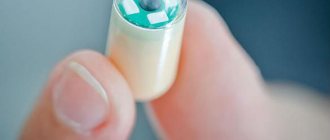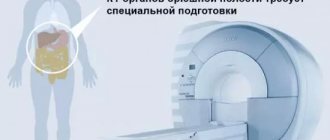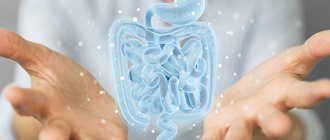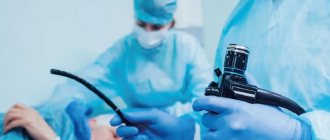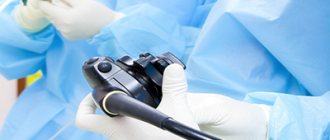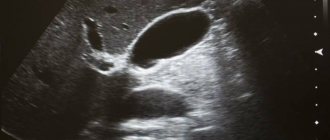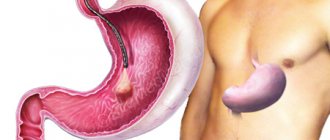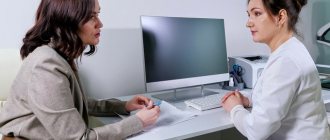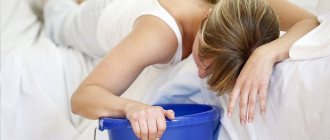The liver and gallbladder perform many functions in the human body, including direct participation in the digestive processes through the production of special enzymes, the synthesis and accumulation of bile. Any disturbances in these organs, their structure, structure or functioning, immediately affect well-being, manifested by symptoms such as heartburn, bowel disorders, weight loss, pain. In some cases, pathological processes in the liver or gall bladder become the first signs of the development of dangerous diseases - cirrhosis of the liver, cholelithiasis, inflammation of the biliary tract. That is why, if alarming symptoms appear in the abdominal area, you should consult a doctor. In this case, one of the procedures that the doctor will prescribe to examine the condition of the internal organs may be duodenal intubation.
Contraindications
Conditions in which this manipulation cannot be performed include:
- varicose veins of the esophagus
- obstruction of the esophagus (narrowing, diverticula)
- exacerbation of gastritis, gastric ulcer and duodenal ulcer
- stomach/intestinal bleeding and conditions after it
- oncological diseases of the gastrointestinal tract
- cholelithiasis (presence of movable stones in the gallbladder), surgery to remove the gallbladder
- chronic cholecystitis and/or pancreatitis in the acute stage
- aortic aneurysm
- cardiovascular failure
- decompensated diabetes mellitus
- asthma attack
- pathologies of the oropharynx, accompanied by impaired swallowing
- general serious condition of the patient
- pregnancy and breastfeeding period.
General characteristics of the anatomy and functioning of the liver and gallbladder
The liver and gallbladder form part of the digestive tract. In addition to participating in the digestion process, the liver is an organ of the immune system; in addition, it performs a protective function, partly the function of hematopoiesis, and most importantly, detoxification.
Anatomically, the liver is located in the abdominal cavity, it is formed by two parts - the left and right lobes. Most of the organ is located in the upper right part of the abdominal cavity. The left lobe partially passes into the left half of the abdominal cavity.
The liver is located under the diaphragm, its upper border is at chest level, it is convex and follows the shape of the diaphragm. The lower edge is 1-2 centimeters below the arch of the ribs, concave and in contact with other internal organs.
The right lobe of the liver is approximately 6 times larger than the left. The mass of the organ ranges from one and a half to two kilograms.
In the middle part of the internal surface of the organ, the hepatic gate is located - at this place the hepatic artery enters the liver, from there exit the portal vein and the hepatic duct, which removes bile from the liver.
The gallbladder is “hidden” under the gate of the organ - a small hollow organ 12 to 18 cm long, which is adjacent to the outer edge of the liver and lies on the duodenum. The structure of the bladder is represented by the bottom, body and neck, which passes into the cystic duct.
The liver is responsible for the secretion of bile, which breaks down fats, enhances intestinal motility and the action of pancreatic and intestinal enzymes. Bile also helps neutralize the acidic environment of the food bolus that leaves the stomach, promotes the absorption of cholesterol, amino acids, calcium salts and fat-soluble vitamins.
The liver is involved in all metabolic processes in the body - protein, fat, carbohydrates.
The organ also synthesizes hormones and stimulates the production of hormones by the adrenal glands, thyroid and pancreas.
In addition, the liver is a huge protective filter that neutralizes the effects of toxins, poisons, medications, and allergens.
Bile produced by the liver enters the gallbladder, where it accumulates until the food entering the body is digested.
Necessary preliminary studies
The duodenal intubation procedure, like any invasive, i.e. penetrating into the body, study is a serious procedure that requires the so-called tolerance to minimize possible complications. The task of the specialists of the EXPERT Clinic is to responsibly approach the issue of examination and the safety of its implementation.
Therefore, duodenal intubation is performed in patients only if:
- referrals from a specialist who clearly assesses the validity of the procedure and the competence of its implementation for a specific patient
- preliminary ultrasound of the gallbladder, which will assess the condition of the gallbladder and its contents. If there are stones or inflammation of the wall, the procedure can be extremely dangerous. Shelf life: 1 month.
- FGDS, which is carried out to assess the condition of the mucous membrane of the stomach and duodenum, because the presence of inflammation, ulcers, or anatomical features may be a contraindication or impossibility of the procedure. Shelf life: 1 month.
- An ECG, which will allow you to assess the presence or absence of risks of cardiovascular complications during the probing process, because The procedure lasts several hours with possible fluctuations in blood pressure, in particular. Shelf life: 1 month.
What types of procedures can be performed
Duodenal sounding may differ depending on how it is carried out:
- blind probing, when the patient does not have to swallow the probe - the procedure uses the process of stimulating bile formation;
- fractional or multi-moment: in this case, content is collected at a certain interval, for example, every five minutes;
- chromatic sounding implies that before diagnosis, a dye is injected into the patient;
- a minute-long procedure makes it possible to assess the condition and functioning of the sphincters.
Preparation for the procedure
Duodenal intubation is performed in the morning strictly on an empty stomach. Two hours before the procedure, it is permissible to take a few sips of plain water. Immediately before the procedure, you should not drink, smoke, or take medications. The oral cavity must be rinsed, the nasal passages cleaned, and dentures removed (if any).
Dinner on the eve of the procedure should be no later than 18.00. Products that cause gas formation are prohibited. This:
- fermented milk products
- black bread
- fresh vegetables and fruits
- legumes
- potato
- carbonated drinks, etc.
Taking medications is possible only with the permission of a doctor.
5 days before probing, you must stop taking medications:
- choleretic (allochol, cholenzym, liv-52, holosas, etc.)
- digestive enzymes (pancreatin, festal, panzinorm, etc.).
Probing at home
You can carry out the tubage procedure to cleanse the body of excess bile at home. The probeless method is called blind probing of the gallbladder and can be used in addition to the duodenal method. When performing tubing at home, a person does not need to swallow any tubes; everything goes much smoother and easier.
It is necessary to prepare in advance for blind probing. A few days before this, it is recommended to significantly increase the proportion of fiber consumed and freshly squeezed fruit and vegetable juices in the diet. This will help cleanse the intestines and stimulate the functioning of the digestive tract.
If a patient is diagnosed with liver or gallbladder disorders such as duodenitis, biliary dyskinesia, hepatitis, pancreatitis, cholecystitis, etc., then blind probing at home will have to be performed repeatedly. But this manipulation must be coordinated with a doctor, since it has many contraindications.
Methodology
Duodenal intubation is carried out with a disposable sterile probe, much smaller in diameter and more flexible than the probe for FGDS. Initial position of the patient: sitting with the chin pressed to the chest and the mouth wide open.
- The end of the probe (olive) is placed on the root of the tongue and, at the moment of swallowing, is advanced into the esophagus and further into the stomach (it is recommended to breathe deeply).
- Then the patient is placed on the couch on his right side, placing a small cushion.
- The patient is asked to make a swallowing movement, while simultaneously advancing the probe into the duodenum. The accuracy of the actions performed is confirmed by the flow of golden-yellow liquid into the probe. So, within about half an hour, the first portion of duodenal contents of 15-40 ml is collected - portion “A”.
- Then a substance that enhances secretion (xylitol, sorbitol, magnesium sulfate) is introduced into the lumen of the duodenum, and the lumen of the probe is clamped with a clamp. After 5-10 minutes, the instrument is removed, and dark green bile begins to flow into the probe. Portion “B” with a volume of about 60 ml is collected within 20-30 minutes.
- When there is a noticeable change in the color of the liquid to bright yellow, they begin collecting portions “C” with a volume of 10-20 ml.
Upon completion of the collection of all types of portions (A, B and C), the patient is placed in a sitting position and the probe is carefully removed. If a bitter taste is felt in the mouth, the patient is offered to rinse with antiseptics or glucose solution.
How is research done using a probe?
The probing procedure can take from an hour to an hour and a half.
Before starting the diagnostic procedure itself, the doctor asks the patient to take a standing position and measures the distance from the oral cavity to the navel of the subject.
A specialist will need this information to correctly calculate the length of the probe to use. After this, the patient is seated on the couch, given a special tray, and the examination begins directly.
The main difficulty of probing is that the patient will have to “swallow” the probe on his own. If the patient does this incorrectly, he will provoke a strong gag reflex. How can this be avoided? In this regard, experts give several clear recommendations:
- The internal organs of the subject should not be “squeezed”. That is why before the procedure he should wear the loosest and most comfortable clothes possible.
- During the examination itself, it is recommended to loosen the belt on your trousers and unbutton the top buttons on your blouse or shirt.
- During the procedure itself, the patient should try to breathe through the nose and as deeply as possible, tightly fixing the probe with his lips.
- While “absorbing” the probe, the patient should try to simultaneously swallow the saliva that has accumulated in the mouth. However, this must be done very slowly, otherwise you may choke and provoke a gag reflex. Moreover, if the probe is quickly swallowed, there is a risk that the hose will simply curl up in the subject’s stomach.
The patient should follow all the above recommendations until the research device reaches his stomach. You can judge that this happened by the marks on the probe itself. Or - by blowing air through the hose (usually this is done using a syringe). If during such manipulations in the chest area the patient hears gurgling and bubbling, then everything is going as planned.
Recommendations after the procedure
Eating is allowed 30-40 minutes after probing (light breakfast). Throughout the day, you must follow a diet with the exception of heavy foods - fatty, fried, spicy foods.
After the procedure, the patient’s blood pressure and pulse may destabilize, so it is advisable for him to remain in the ward or in the clinic lobby for an hour under the supervision of medical workers. It is also possible for the body to develop a response to the administration of magnesium sulfate in the form of diarrhea (loose stools).
What you need to carry out sounding at home
Blind probing at home is usually carried out using various liquids that have a choleretic effect:
- tubage with mineral water;
- the use of herbal choleretic infusions (decoction of rose hips, milk thistle, etc.);
- magnesia solution;
- xylitol or sorbitol solution;
- vegetable oil;
- honey dissolved in water;
- egg yolks.
Of all the above substances, experts consider blind probing with mineral water or herbal choleretic decoctions to be the softest and most gentle. Magnesia can be harmful to the mucous membrane and can provoke an exacerbation of intestinal diseases. And tubing with vegetable oil is absolutely contraindicated for patients diagnosed with chronic pancreatitis.
Results of duodenal sounding
Duodenal sounding is a very informative diagnostic method for specialists.
- Studying the dynamics of bile secretion allows us to assess the functional state of the gastrointestinal tract. For example, acceleration or deceleration of the intake of portion “B” is usually observed with functional disorders of the gallbladder (dyskinesia), the release of bile more than 60 ml indicates congestion, and its complete absence indicates a possible obstacle to the outflow of bile (stone, tumor, inflammatory infiltrate , scar deformity, etc.).
- Laboratory analysis makes it possible to determine the presence of cholelithiasis, helminthic infestations, bacterial infections, as well as assess the exocrine function of the pancreas, the consistency of the sphincters and muscles of the gallbladder.
- In addition, duodenal intubation allows the administration of medications bypassing the stomach, which can be very important for some gastrointestinal pathologies. Also, the method of probing is used to introduce nutritional mixtures in the process of caring for “severe” patients.
- The results of this examination are decisive in the process of making a diagnosis and developing a conservative treatment regimen and very often allow patients to avoid serious surgery.
Why are such examinations prescribed?
Duodenal intubation - examination of the biliary tract.
Duodenal intubation is considered one of the advanced research methods, indispensable in the diagnosis of diseases of the bile ducts.
In other words, if inflammatory processes begin in the pancreas, liver or organs communicating with them, the composition of the secretions produced by the digestive system will change. And duodenal sounding will help detect and record such changes.
On what basis are such examinations prescribed? An indication for referring a patient for duodenal intubation may be the manifestation of such alarming symptoms as:
- bitterness in the mouth;
- copious sputum production;
- pain in the hypochondrium (usually on the right);
- nausea and vomiting syndrome;
- increased concentration of urine.
What analysis results can you see?
The bile obtained as a result of probing is sent for microscopic examination. If necessary, bacteriological culture is done to determine pathogenic microorganisms or to identify parasites.
After the procedure is completed, the patient will be given a form containing the following information:
- Procedure time. The longer it lasts, the more it indicates pathologies of the gastrointestinal tract and gallbladder.
- Amount of bile. A deficiency, like an excess, also helps determine the presence of inflammatory processes.
- The transparency and density of liquids indicates the functioning of the stomach, liver and gall bladder.
- Color. In the first and last test tubes, the liquid should be lighter, in the second - bright and concentrated. Bloody spots and mucus indicate inflammation, ulcers or parasites in the gastrointestinal tract.
Since bile is collected in 3 tubes, the deviations found in the contents of these tubes can indirectly indicate the presence of diseases:
- If changes are detected in the first test tube, this indicates diseases of the stomach, pancreas or duodenum.
- If there are differences from the norm in the second test tube, this indicates gallbladder disease.
- Deviations in the third test tube indicate liver pathologies.
Price
The sounding procedure can be carried out in a private clinic or a free clinic with a compulsory health insurance policy and a referral from a gastroenterologist. The cost of manipulation in private hospitals in Moscow will be:
| Clinic name | Price, rubles |
| Central Research Institute of Gastroenterology | 5800 |
| Be healthy | 1175 |
| Clinic Chaika | 1000 |
| Androhelp | 1200 |
general characteristics
This procedure is also called duodenal intubation. After all, bile is collected from the duodenum in the area of the duodenal papilla. This is where the bile duct opens. When analyzing bile from this place, the condition of the liver, ducts, and gallbladder can be assessed. It is possible to detect the presence of bile stagnation, impaired motility of the biliary tract and other pathologies.
In addition to diagnostic, this procedure has therapeutic applications. Stimulating the flow of bile and its removal helps cleanse the bile ducts and prevent the formation of stones. The tube can also be used to administer antibiotics and medications to treat parasitic diseases.
In addition to classical duodenal intubation, fractional and five-phase intubation is used. These procedures are quite unpleasant, take a long time, and are often painful. Many patients have a hard time with them. Therefore, in recent years, instrumental probing has been used less and less, especially since their diagnostic value is not so high; now more informative methods have appeared.
The use of duodenal intubation for therapeutic purposes is also not always justified. To remove bile, you can use blind probing, which does not require swallowing the tube.
Indications
Probing of the stomach or gastric bladder is carried out according to strict indications. These include:
- chronic pain of pronounced severity in the hypochondrium;
- hepatitis;
- gallbladder pathologies, liver cirrhosis, liver abscess;
- cholecystitis;
- echinococcosis, opisthorchiasis or other parasitic diseases;
- indigestion, dyskinesia;
- nausea, vomiting, diarrhea, constipation;
- change in the color of stool, the appearance of blood or a black mass;
- acquiring a yellowish tint to the skin;
- colic;
- intestinal bleeding;
- ascites (accumulation of fluid in the abdominal cavity).
How is blind probing done?
It is safest to perform probing at home with mineral water. The best time to carry out the procedure is the morning, since it is after waking up that the gallbladder is most active. It is advisable to begin probing without getting out of bed. Everything necessary for the tubage should be prepared the day before.
- After waking up, you should drink about a quarter liter of mineral water without gas at room temperature. If there are no concomitant diseases of the digestive system, then you can add a small amount of magnesium, which helps to maximize the contraction of the gallbladder. You can also add a spoon of vegetable oil.
- After 20 minutes you need to drink another quarter liter of mineral water. After this, prepare one of three types of mixture: with egg yolks, with honey or with vegetable oil and juice. The resulting product should be drunk.
- After 15 minutes, drink a third portion of mineral water and lie down on your right side with a warm heating pad on the hypochondrium.
- After about an hour and a half, lying on your right side, you can get up and eat. If after some time the urge to have a bowel movement appears, it means that the tubing procedure was successful.
The result of probing should be the formation of frequent stools with a green tint. This is a sign that accumulated excess bile is being actively removed from the body.
Blind probing at home is recommended during treatment of the liver or gallbladder, as well as to prevent congestion. The frequency and duration of the procedure must be agreed with the attending physician. In terms of its effectiveness, this method of tubing is absolutely no different from that carried out in a hospital setting.
Probing of lacrimal ducts in children
Tear duct in a child
The human body is designed in such a way that a film can exist inside the baby’s tear ducts in the womb.
Over time it should dissolve. If this does not happen, the lacrimal canal is narrowed or completely absent, then the outflow of tears is impossible. About 35% of newborns are born with membrane. Tear accumulates in the cavity of the lacrimal sac, while its contents (mucus, detritus of embryonic, epithelial cells, etc.) provide a favorable environment for the growth of microflora with the subsequent development of purulent dacryocystitis.
Dacryocystitis of newborns is an inflammation of the lacrimal sac, which is based on congenital obstruction of the nasolacrimal duct. Dacryocystitis can be confused with conjunctivitis, which is accompanied by redness of the eye, discharge of pus or mucus, lacrimation, and clumping of eyelashes. Diagnosis of pathology will help the ophthalmologist make the correct diagnosis and prescribe treatment.
Symptoms of tear duct disease in children
- lacrimation and lacrimation on one or both sides;
- mucopurulent discharge;
- edema;
- skin redness;
- increase in body temperature.
Probing the tear duct
If properly performed massage of the lacrimal sac within 2 weeks does not lead to recovery, then the patient is offered probing followed by washing of the lacrimal ducts.
Probing of the lacrimal canal is carried out on an outpatient basis under local anesthesia in a specially prepared room and takes 3-5 minutes. As a rule, immediately after the procedure the child returns to normal life.
In one procedure, the ophthalmologist can perform probing on one or both eyes.
Indications for sounding
Probing in children can be carried out from a very early age if there is no effect from conservative treatment for more than 2 weeks (massage and taking antimicrobial drops). The patient is sent for probing after consultation with an ophthalmologist.
Contraindications
- acute respiratory diseases;
- acute inflammatory diseases of the ear, nose and throat;
- severe general somatic pathology in the stage of decompensation;
- previous repeated and unsuccessful probing and rinsing of the lacrimal ducts;
- atony of the lacrimal canaliculi, etc.
Any patient can get an appointment at the clinic, either with a referral from the attending physician or independently. Additional information and pre-registration for an appointment with an ophthalmic surgeon by calling the hotline 8-800-500-70-27.
MAKE AN APPOINTMENT
